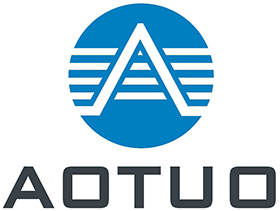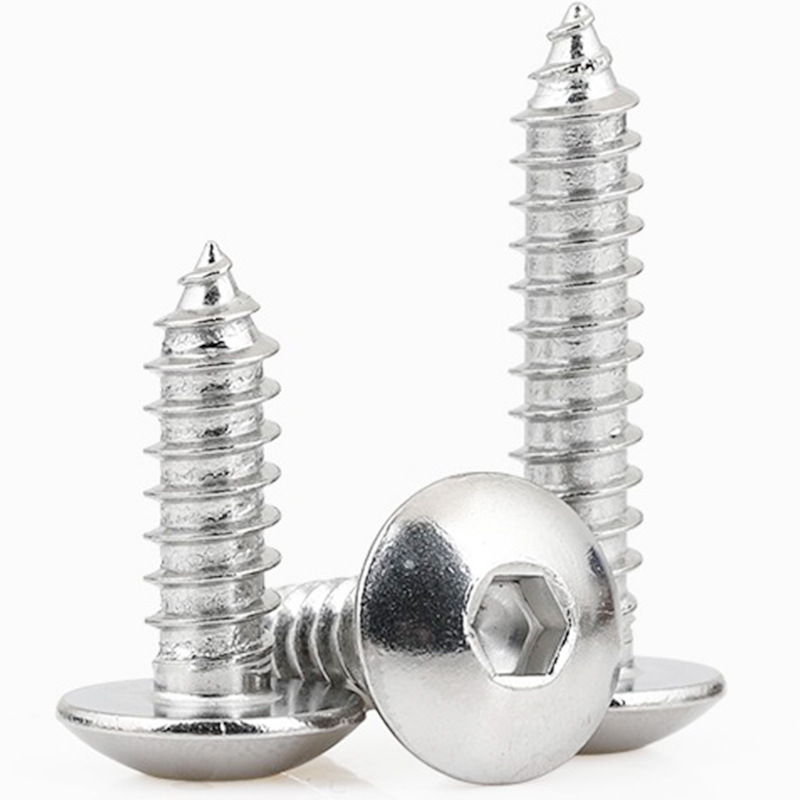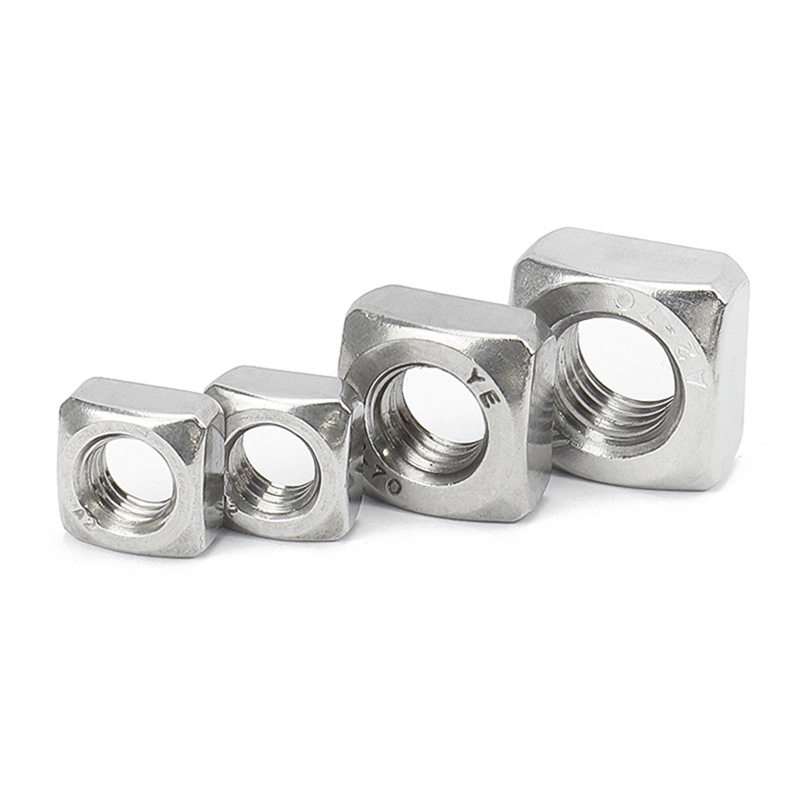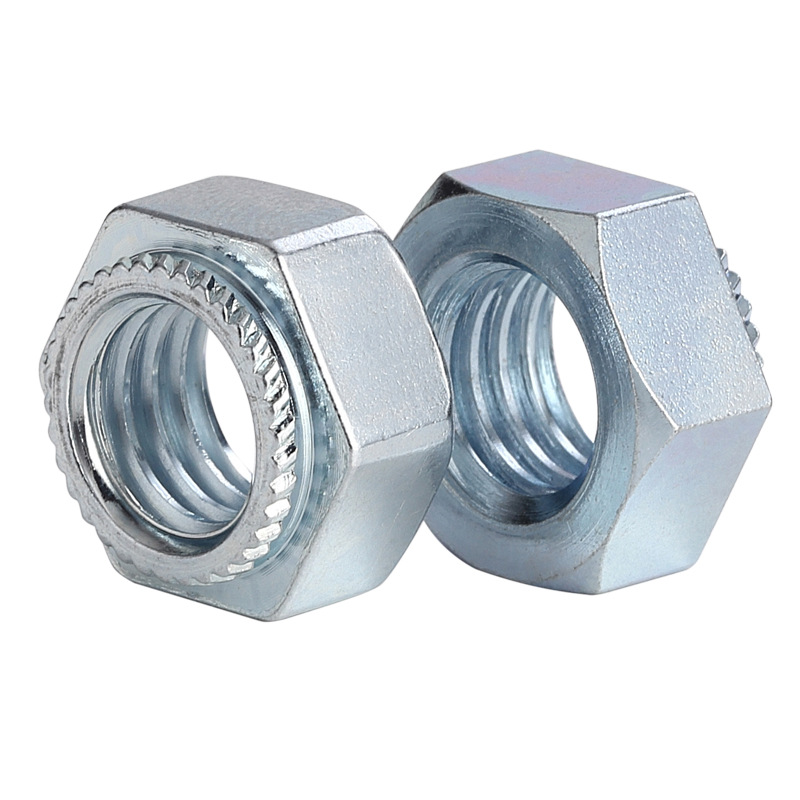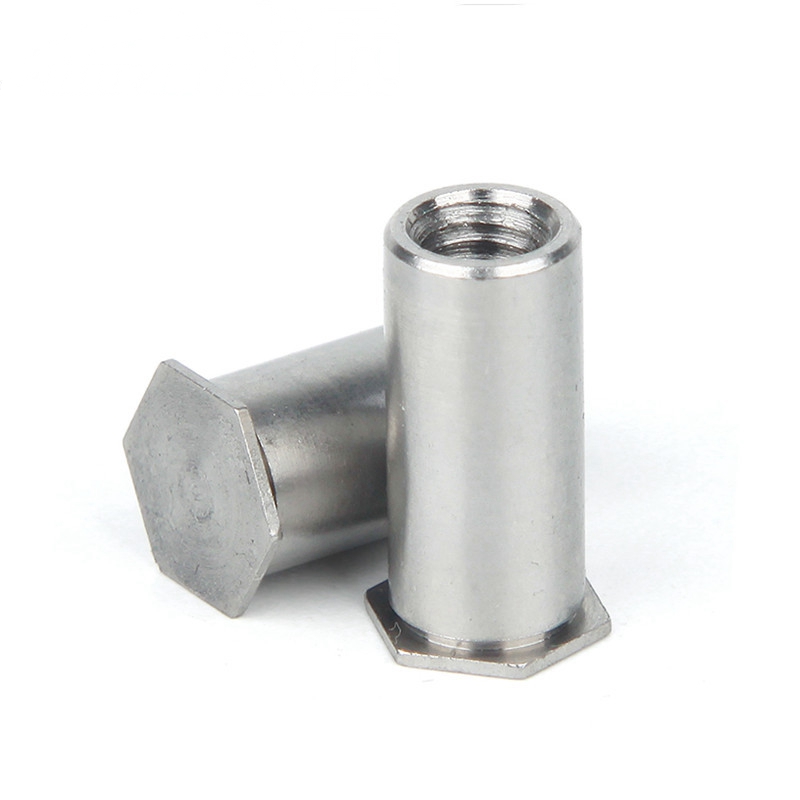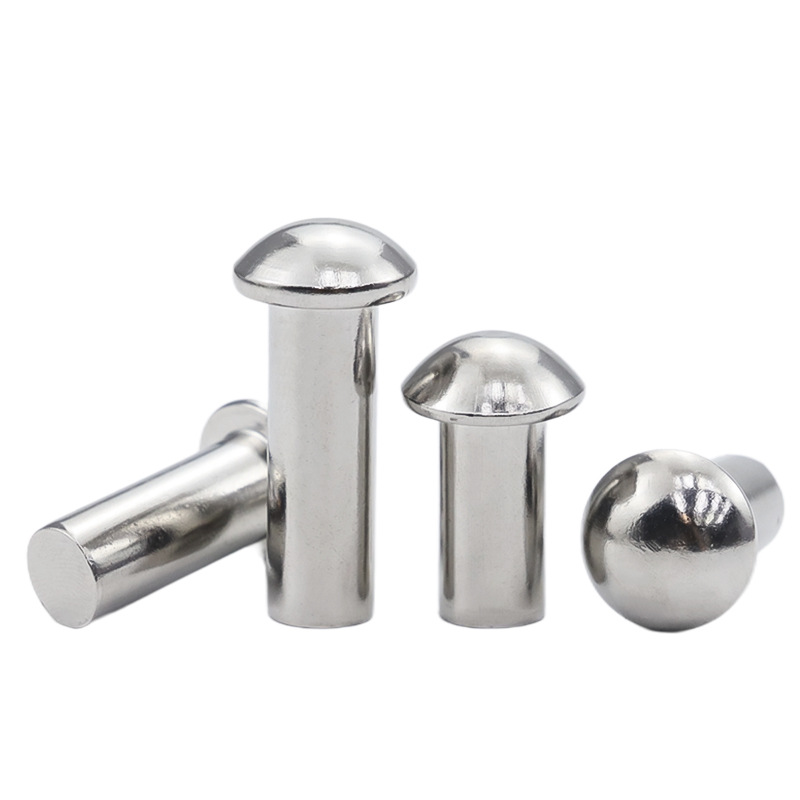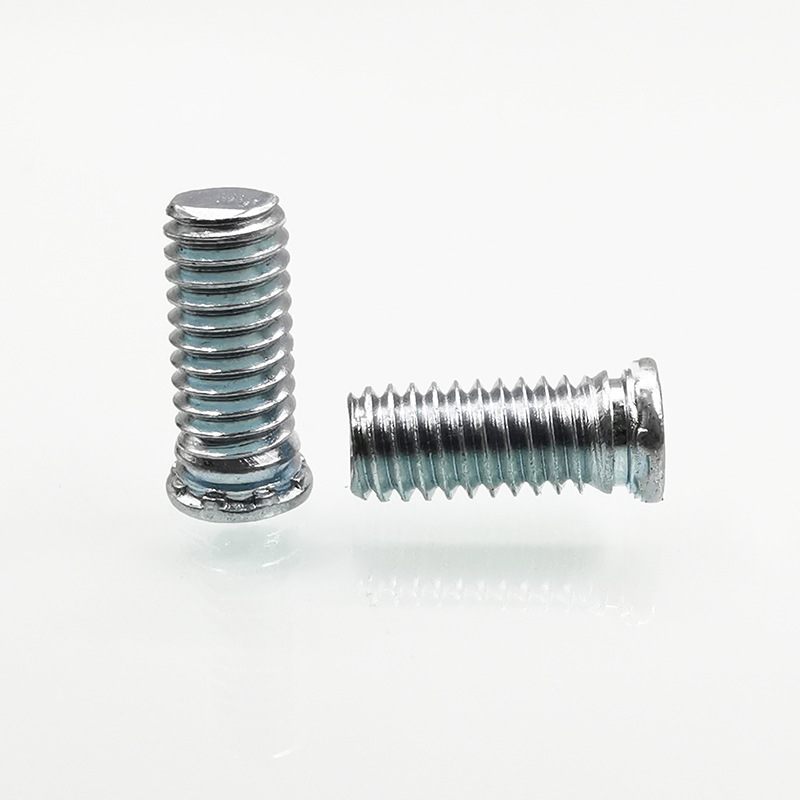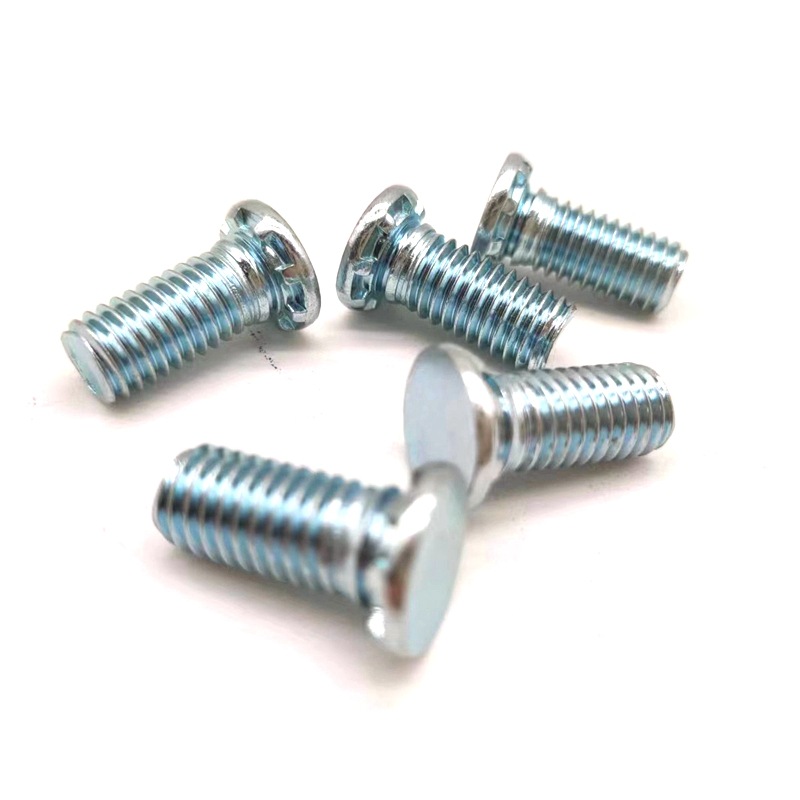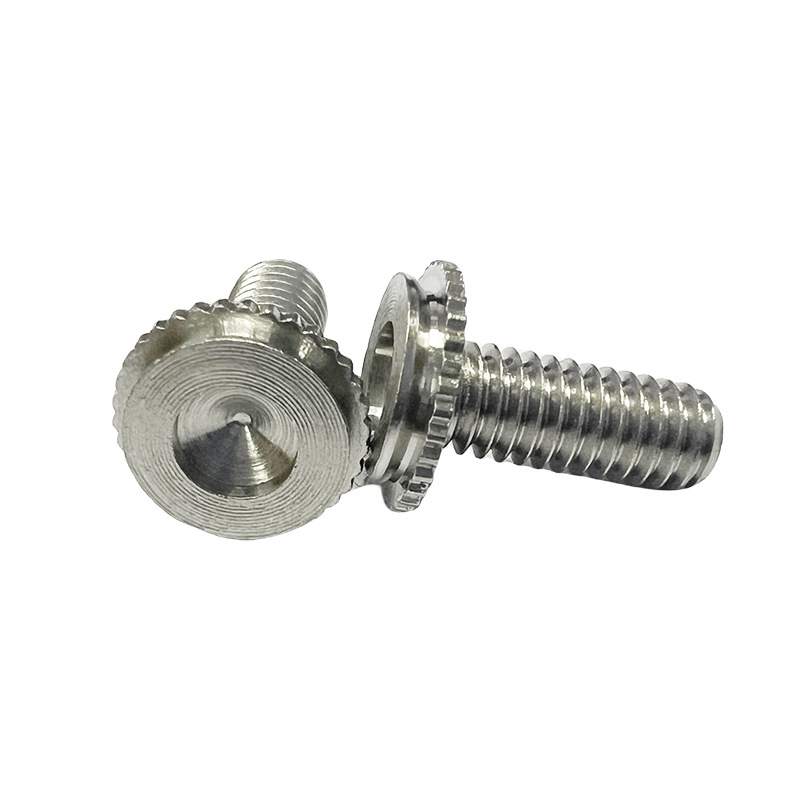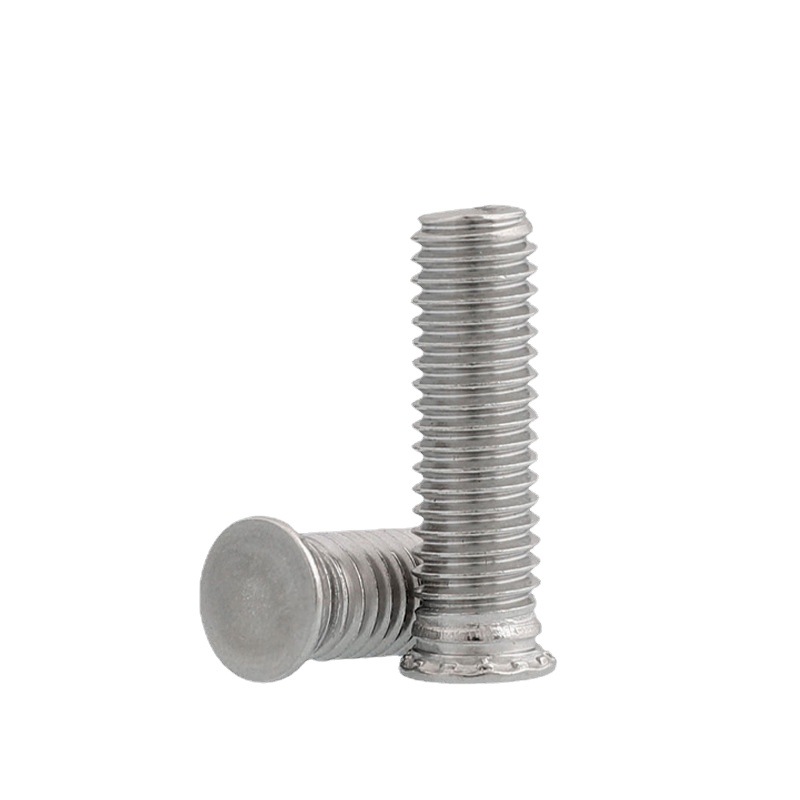
1. Definition of self-clinching screws
Compression rivet screws are a kind of structural parts made by cold heading process, usually used to connect two or more plates. Its characteristic is that it can complete the reinforcement function when only one side is contacted. There are many different types of compression rivet screws, which will be introduced one by one below.
2. Advantages and disadvantages of pressure rivet screws
- Advantages of pressure rivet screw
1. Strong connection ability: Compression rivet screws have strong tensile and shear strength, which can provide durable connection under heavy load.
2. Reliable sealing: Compression rivet screws can form a good seal during installation, which can prevent impurities such as water, dust, and oil from entering the interior of the connected parts.
3. Easy to install: The installation of compression rivet screws is very convenient and quick, takes a short time, and can be completed without affecting the existing structure.
4. Cost saving: Compared with welding and threaded connections, compression rivet screws have lower costs and can significantly reduce production costs.
- Disadvantages of pressure rivet screw
1. Unable to disassemble: Once installed, the self-clinching screw is almost impossible to disassemble, so the entire connection part needs to be replaced when it needs to be disassembled and repaired.
2. Limited applicability: Self-clinching screws are only suitable for connecting thin plates and soft materials, and are not suitable for connecting thicker or harder materials.
3. Special tools are required: Special installation tools are required to install self-clinching screws, which makes installation and maintenance costs higher.
3. Classification of pressure rivet screws
According to the material
1. All-aluminum self-clinching screw
All-aluminum self-clinching screw is a connector made of pure aluminum. It is characterized by light weight, corrosion resistance, good conductivity, and is often used in places with limited space. All-aluminum self-clinching screws are suitable for connecting material plates with high hardness requirements.
2. Aluminum-steel composite self-clinching screw
Aluminum-steel composite self-clinching screw is a connector that uses a high-hardness steel material as a core rod and a pure aluminum outer layer. The structural characteristics of aluminum-steel composite self-clinching screws help balance strength and weight, and are one of the common connectors.
Other categories
1. Open-end self-clinching screws
The characteristic of open-end self-clinching screws is that one end is open during the riveting process. Its advantage is that it is easy to install and can quickly connect the plates. Open-end self-clinching screws are usually used to connect thinner plates.
2. Hexagonal nut self-clinching screws
Hexagonal nut self-clinching screws are a type of connector with long threads. Its characteristic is that it can strengthen the connection between two plates after being screwed into the threads. Hexagonal nut self-clinching screws are widely used in equipment installation and maintenance as well as light manufacturing.
4. Production process of pressure riveting screws
The production process of riveting bolts is similar to that of ordinary screws. However, some riveting bolts can be made with lathe parts. After the lathe is turned, the specifications and dimensions of all aspects are relatively accurate. The tolerance range is also reasonable. Its production process is to first buy the materials for producing riveting bolts, and then order the corresponding molds. Now the first step is done, and the teeth are polished. Before grinding the teeth, of course, the tooth plate must be prepared.
Electroplating of pressure riveted screws
There are many types of electroplating for rivet bolts, generally iron rivet bolts need electroplating, while stainless steel bolts generally do not need electroplating. Just wash and dry. There are two types of electroplating colors for iron, one is environmentally friendly and the other is not environmentally friendly, that is, ordinary. Environmentally friendly electroplating includes: environmentally friendly white zinc, environmentally friendly colorful zinc, environmentally friendly black zinc, environmentally friendly white nickel, environmentally friendly blue zinc, etc. Ordinary electroplating includes: white zinc, black zinc, colored zinc, white nickel, black nickel, military green, black, etc.
5. Applicable occasions and precautions for self-clinching screws
Difference between self clinching nuts and rivet nut
When using self-clinching screws, you should consider their applicable occasions and precautions. When choosing this connection method, you need to know the thickness of the required connection parts and choose the appropriate type of self-clinching screws according to the required tensile and shear strength; in addition, you also need to pay attention to the quality and surface treatment of the connection parts to ensure the stability and sealing of the connection. In addition, you should also pay special attention to the hardness of the self-clinching screws, and adjust the parameters of the self-clinching machine during installation to ensure the installation quality.
